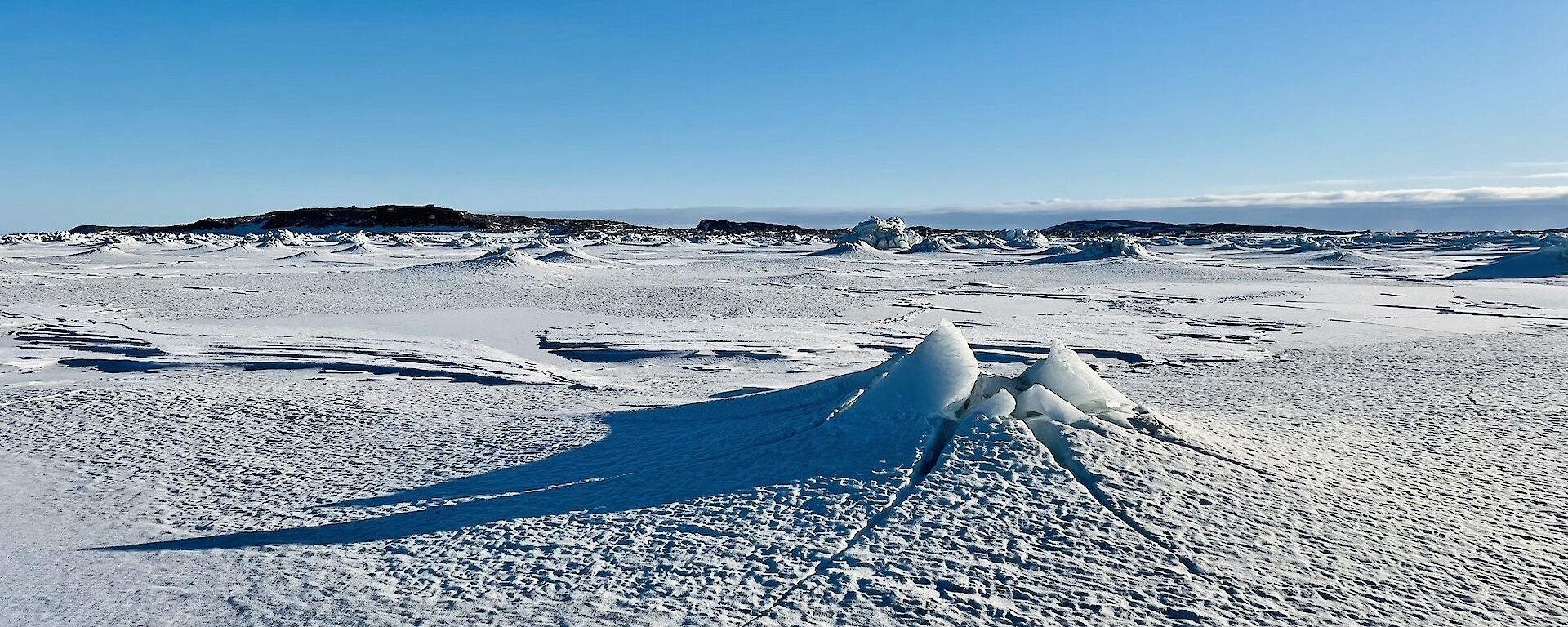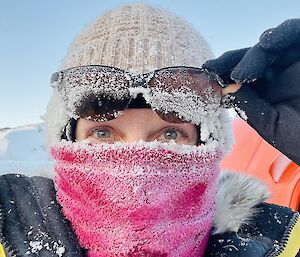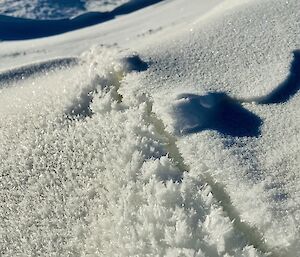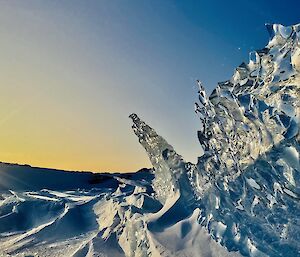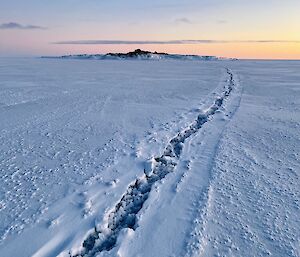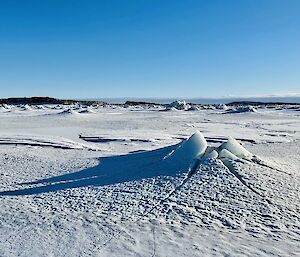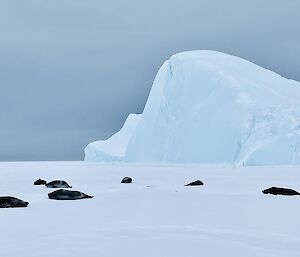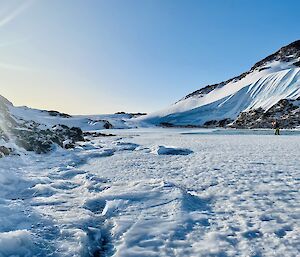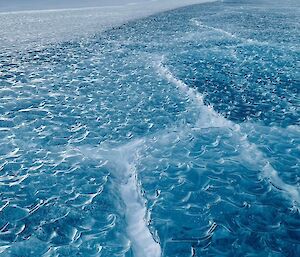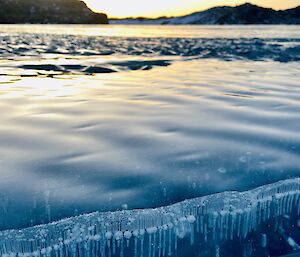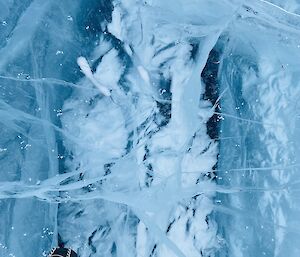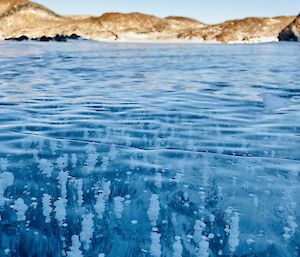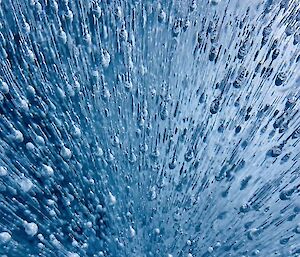It was fairly obvious that we’d see plenty of snow and ice on the White Continent this year. What I didn’t expect was how variable and fascinating they would be. I’m fairly evenly split between left- and right-brain thinking. Lefty wants to go down the rabbit hole of how’s and why’s, Righty says ‘ooohh look… pretties!’ Both are kept well occupied around here.
Breath often condenses into frost on our beanies and buffs. Delicate ice feathers form in sheltered tide cracks. Crystal clear natural ice sculptures catch the sunlight if you time it just right and snow drifts at sunset can look more like a desert in the Kimberley.
The sea ice also moves with the tides and currents. We need to be careful of unstable tide cracks, pressure cracks and leads. There are some rather steep jumbles of ice sheets close to shore at huts. At extreme low tides, these can be challenging to drive over. In our nearby bays we have little pressure ‘volcanos’ that look suspiciously like a creche of alien babies just burst free.
We create GPS routes to help us navigate the ice bergs and chunks now fast in the sea ice. Each season is different. The permanent waypoints are a rough guide. Suggestions at best sometimes! The actual route can look like the dance of a drunken bee.
I was on this week’s roster to drill and measure our sea ice. Currently it’s over 1.6m thick. More than thick enough to drive trucks on. Impressive huh?! The ice bergs contrasted beautifully against the moody sky, but low light made for poor surface contrast. The snow over the sea ice was all just flat white. Haggs aren’t known for being comfortable to drive, but hidden snow drifts make for a ride full of bumpy surprises.
Our reward was spotting a group of eight Weddell Seals that were taking advantage of a new crack in the ice. They are some of the first seals to be seen returning this season to have their pups. That’s pretty exciting! The large crack was covered in a layer of snow, barely visible at first. We had parked quite a distance away, as required by wildlife regulations, and while we were in no danger of falling in, it was a perfect reminder of how things could go pear shaped rather quickly if not vigilant.
The freshwater ice is absolutely mesmerising. A melt pond near Trajer Ridge looks more like sea foam. Some lakes are like waves literally frozen in time, others so reflective the ice looks liquid still. My favourites are the awesome bubbles and cracks in the freshwater lakes such as Crooked Lake near Hidden Gorge, Elephant Lake between Platcha and Bandits Huts, and the understated Pauk Lake right next to the Trajer Ridge melon. I’ve taken literally hundreds of photos…
Apparently, it’s not as simple as saying they are methane bubbles. There’s supersaturation of gases as the water freezes, plus trapped bubbles from meltwater and… something something… ooohh look… pretties!!
Rae Madison

